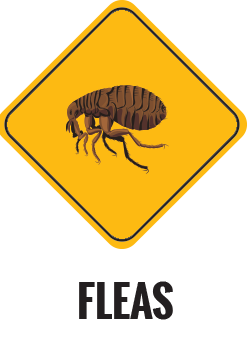Tony's Termites and Pest Control Gold Coast. Call Tony Now
0415 045 803

- Mar 29, 2019
Termite Inspection Procedure
A Termite Inspection is not to be confused with Pre-purchase Pest Inspection. It is carried out every 12 months and more frequently every 6 months depending on risk assessment.
A thorough Termite Inspection is recommended at least once a year; and can save a homeowner thousands of dollars in future costs.
Even if a Termite Management System or Chemical Barrier Treatment is in place around a building it is still necessary to conduct a 12 monthly Termite Inspection in some cases just to maintain the warranty of the treatment.
Procedure for a Termite Inspection
Outside (start in the garden)
We start with a detailed look at the gardens, fences, old tree stumps etc
We inspect any other buildings and structures like sheds, garages, outhouses etc
Internal Inspection
Check every accessible room, all available skirting boards, window frames, door frames, cupboards and concealed areas (with special tools see below).
Roof voids and sub-floors will also have to be thoroughly inspected.
Some inspectors avoid checking the roof void because it can be hot, cramped, full of crawling insects - not a great place to be. However that is no excuse not to inspect.
Reasonable Access
If an inspector can't gain access to the roof void or the subfloor, they must give a reason in writing in the report; as stated in the Australian Standards 4349.3 (Inspection of buildings - Timber pest inspections) for reasonable access.
The manhole cover that leads to the roof void must be at least 400mm × 500mm, this is classed as reasonable access, anything under that; an inspector can refuse, due to limited access.
The crawl space for a roof void must be no less than 600 × 600, anything under that the inspector can refuse access, due to lack of crawl space.
Sub-Floor Space
Where a house has a sub-floor and not a slab (graphic), it is also an area that needs to be inspected during the Termite Inspection.
The standard crawl space for sub-floors is a minimum of 400mm; anything below this makes it very difficult to do an inspection and can be deemed a limitation.
That limitation would have to be written into the Termite Inspection report.
Inspection Equipment Used
Mandatory equipment include Moisture Meter and a Sounding Stick - requirement of the Australian Standard 4349.3.
Where a Sounding Stick is used, a hollower sound could indicate termite activity. This may followed up with a Moisture Meter and Thermal Imaging Camera to confirm termite activity.

One popular tool is a Thermal Imaging Camera which uses infrared technology for detecting moisture and temperature variances. Thermal imaging Cameras are non-invasive tools that can be used for concealed areas.
Technical Expertise
The skills of the pest technician is key to a successful Termite Inspection. There is no substitute to a an experienced pest controller with a knowledge of the types of termites, feeding and nesting habits in your location.
A thorough Termite Inspection will take 1 - 2 hours depending on the size of the building - it is not a quick walk through.
Other Articles
Aug 25, 2022 Water leaks known to attract Termites Gold Coast »
May 19, 2022 What To Expect After Your Pest Control Treatment »
Apr 20, 2022 Pest Control Standards »
Sep 13, 2021 Termite Reticulation System »
Aug 18, 2021 Fire Ants Gold Coast »
Aug 11, 2021 Better Application of Pest Control Solutions »
Jul 6, 2021 How do Termite Baits work? »
Jun 16, 2021 Indoor use of Pesticides »
Jan 8, 2021 Regular Annual Termite Inspections »
Sep 18, 2020 Should you be scared of that Huntsman spider? »
Jul 7, 2020 Pest Control Chemicals »
Jun 19, 2020 Pest Control and your Garden »
Feb 4, 2020 Subterranean Termites »
Jan 7, 2020 Most termites are Wingless Sterile Blind »
Nov 27, 2019 Cockroaches bacteria stick to their feet »
Nov 5, 2019 Termite and Insect Barrier Systems in New Building »
May 29, 2019 Inspection no knocking, breaking or drilling »
Apr 30, 2019 Thermal Imaging to locate Termite Nests »
Aug 21, 2018 Termite Barriers up to 2x cheaper than Baits »
Feb 28, 2018 Termite Management Laws »
Dec 7, 2017 Tony and his pets »
Dec 1, 2017 Termite Self Assessment Guide »
Nov 15, 2017 Where are cockroaches hiding »
Book Pest Control
Get a quote for your pest control
NO/ Obligation
- Termite Inspections
- General Pest Control
Pest Control Solutions Gold Coast
Termidor Accredited Termite Control
A more effective termite protection zone that can leave your home looking just as it did before.

- Most trusted and effective termite treatments
- Effective protective zone termites cannot avoid
- Highest level of protection year after year
- Without damaging the aesthetics of your home
- Without cutting corners or disturbing the structure
- $2 mil Warranty












